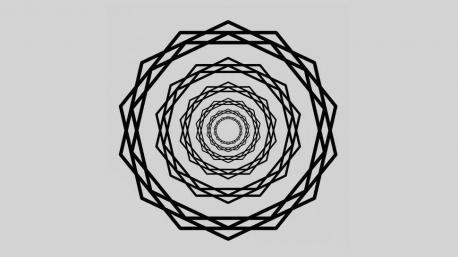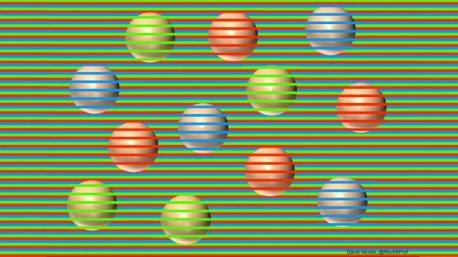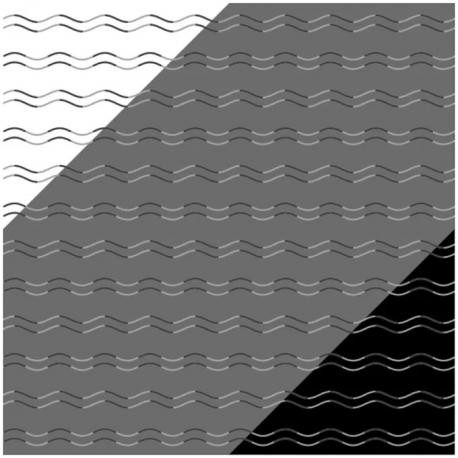Results: We haven't had an optical illusion survey for a while so get your headache pills and glasses ready for these ones. Warning: Some of these images may cause dizziness. Caution is also advised for those with light sensitivity.
Published on 08/10/2024
Optical illusions play tricks on your brain and can make you see things that aren't there. Researchers use optical illusions to gain insight into how humans see and process visual information, although the mechanisms behind many of them are a mystery. Some researchers argue that "optical illusion" should only be for physical phenomena, and illusions caused by the brain are "visual illusions." Frankly I don't care. Enjoy the survey.

QUESTIONS
GO to COMMENTS
Comments
1.
1.
The Scintillating Starburst illusion appears to have bright rays emanating from its center. If the illusion works, you'll see bright rays shining through the intersection points between the outer peaks of each wreath. Our brain perceives bright dots at these intersection points, because they're the thinnest parts of the wreath, and it then invents rays to connect those dots. (Image credit: Courtesy of Michael Karlovich, Recursia LLC) Do you see the rays?

Yes
53%
1068 votes
No
26%
520 votes
Not Applicable
21%
412 votes
- It often happens in nature and humans figure out how it works.
- Do t know
- It's your survey, so you tell us!
2.
2.
This next one is called the Hermann grid. Dark spots appear in the illusion that don't really exist. Your brain will probably create dark blobs that aren't really there at the intersections of the white grid lines. Physiologist Ludimar Hermann first documented the illusion in 1870. Researchers are still deciphering the exact mechanisms behind how the grid works, but it could be the response of retinal ganglion cells, which receive and transmit information coming into the eye. Ganglion cells are excited by light, and the intersections of the grid appear dark because there is less stimulation at these points than along the lines. My ganglion cells got excited - did yours?

Yes
40%
797 votes
No
36%
729 votes
Not Applicable
24%
474 votes
- Escalator steps when it isnt turned on.
- Not that I've determined, no.
- Hurts my eyes
3.
3.
I can't get this next one to work for me. It is called Confetti Spheres It is an image that tricks the brain into seeing different colored spheres that are, in fact, all the same shade of beige. The colors of the stripes bleed over into our perception of the spheres and messes with our perception of the color behind them. The foreground stripes in each orb correspond with the shade of the orb behind. We see the orbs in their true color of beige when the stripes are removed or pushed to the background. Could you get your eyes to do that?

Yes
22%
448 votes
No
54%
1086 votes
Not Applicable
23%
466 votes
- There is a small part at the bottom of the spheres that is beige
- No, it does not.
- Yes
4.
4.
Lastly (for today) we have the curvature blindness illusion. Humans can perceive a wavy line as an angular zigzag. In the image above, all of the lines are the same wavy shape, but half of them appear to be zigzagging in the gray section. Kohske Takahashi, a psychology professor at Chukyo University in Japan, documented this illusion in a 2017 study published in the journal i-Perception. Takahashi suggested that the brain has a separate mechanism for identifying curved and angular shapes, and that the perception of angles may take priority when they compete in the curvature blindness illusion. Given a choice, I prefer looking at curves. Did your brain see both types?

Yes
58%
1157 votes
No
19%
383 votes
Not Applicable
23%
460 votes
- They still look different.
- still different
- Different
COMMENTS


